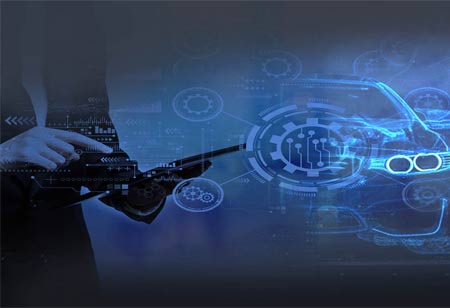THANK YOU FOR SUBSCRIBING
THANK YOU FOR SUBSCRIBING
Be first to read the latest tech news, Industry Leader's Insights, and CIO interviews of medium and large enterprises exclusively from Auto Tech Outlook

By
Auto Tech Outlook | Monday, November 11, 2024
Stay ahead of the industry with exclusive feature stories on the top companies, expert insights and the latest news delivered straight to your inbox. Subscribe today.
Europe leads in V2G technology, which stores renewable energy, reduces reliance on traditional power plants, and serves as an emergency backup, transforming the automotive industry.
FREMONT, CA: The electric vehicle (EV) revolution is reshaping the automotive industry, with its impact reaching well beyond personal transportation. Vehicle-to-grid (V2G) technology is gaining prominence as an innovative approach to leverage the energy stored in EV batteries, transforming them from mere electricity consumers into active contributors to the energy grid.
Advantages of Vehicle-to-Grid (V2G) Technology
V2G technology offers many benefits that support both energy systems and EV owners. By storing surplus renewable energy and releasing it as needed, V2G contributes to grid stabilisation, ensuring a balanced supply and demand and reducing dependence on traditional power plants. V2G alleviates grid strain during peak hours by allowing EVs to charge during off-peak times and discharge power when demand surges. This system can also serve as an emergency backup, enabling EVs to supply power to homes during blackouts, ensuring essential functions like lighting and appliance use. Economically, V2G presents new revenue opportunities for EV owners who can sell excess power back to the grid or participate in energy markets. Environmentally, V2G reduces reliance on fossil fuels and fosters renewable energy, supporting a cleaner and more sustainable future.
Europe’s Leadership in V2G Technology
Europe stands at the forefront of V2G technology, with numerous pioneering initiatives driving adoption across the continent. The EU-funded V2Market Project, for example, demonstrates the commercial viability of V2G by integrating EVs into energy markets and offering valuable insights into its potential. European efforts also include establishing robust communication standards to ensure seamless interaction between EVs and the grid. Furthermore, many European governments are providing financial incentives and policy support to accelerate the adoption of V2G technology and expand EV ownership.
Technical considerations are critical for the successful implementation of V2G systems. One primary concern is battery degradation, as frequent cycling for V2G can accelerate wear on EV batteries. However, advanced battery management systems and optimised charging protocols offer solutions to mitigate this issue and extend battery life. Additionally, grid compatibility is essential; V2G systems must be seamlessly integrated with existing grid infrastructure and communication protocols to ensure reliable operation. Economic viability is another crucial factor influenced by electricity prices, government incentives, and the market value of services provided to the grid. These considerations collectively shape the potential and practicality of V2G technology.
The future of Vehicle-to-Grid (V2G) technology in Europe is up-and-coming, driven by active research, development, and deployment efforts. As electric vehicle (EV) adoption rises and battery technologies continue to advance, V2G holds the potential to significantly reshape the energy landscape—enhancing sustainability, efficiency, and resilience. Realising this potential depends on a clear and supportive regulatory framework to facilitate V2G’s development and integration. Increasing public awareness and education is also vital, as widespread adoption hinges on addressing battery life and safety concerns. Additionally, international collaboration and sharing of best practices can accelerate V2G advancements globally, maximising its impact on energy systems.
 Copyright © 2025 AutoTech Outlook. All Rights Reserved | Privacy Policy | Subscribe | Sitemap | About us | Feedback Policy | Editorial Policy
Copyright © 2025 AutoTech Outlook. All Rights Reserved | Privacy Policy | Subscribe | Sitemap | About us | Feedback Policy | Editorial Policy 



